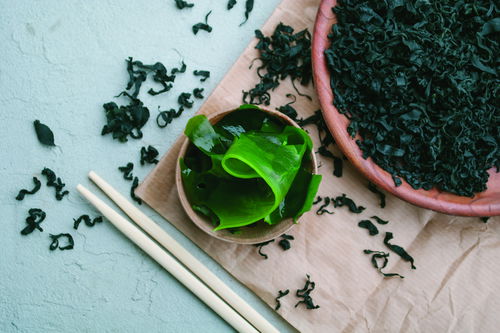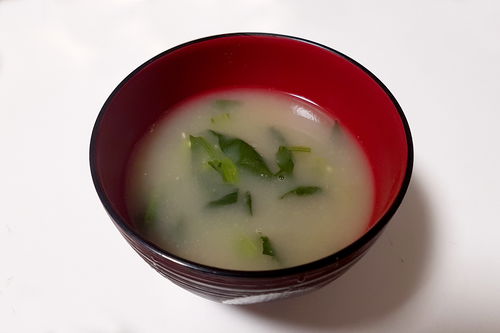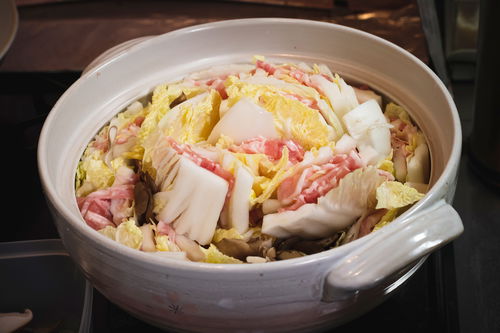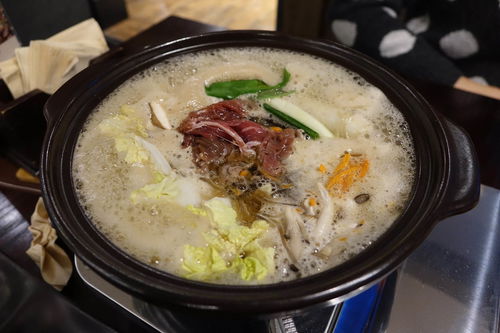Table of contents:
Dashi is a fish broth and an important part of Japanese cuisine, as it is responsible for the unique umami flavor that characterizes many Japanese dishes. You can compare Dashi to German vegetable broth. It is usually used as a base for soups and many sauces. Dashi also refines all noodle dishes, stews and hot pots. The broth has been used since at least the 17th century. Compared to European broths, which consist of different types of vegetables, herbs, meat and spices and whose preparation time can take several hours, Dashi can be made from only 1-2 ingredients and within 20 minutes. The ingredients for Dashi can vary and there are also vegetarian and vegan versions. While Japanese cuisine also uses meat and vegetable broths, these are rarely found in recipes.
Taste of Dashi
Dashi is very flavorful because many ingredients contain natural glutamate. In general, the broth tastes spicy and sweet, but still relatively mild and not too salty. Dashi is best described with the fifth taste sensation "umami". If you use a good Dashi as a base, you hardly need to season dishes any more.
Appearance of Dashi
Dashi is clear and usually has a golden hue. Normally all ingredients used during cooking are sieved out.
How healthy is Dashi?
The answer depends on how the broth is prepared, as well as what recipe you use it in. For example, a Dashi made with Katsuobushi (dried fish flakes) is very healthy because Katsuobushi contains many amino acids. These fish flakes also have an anti-aging effect and can support you on a diet because they help with weight loss.
However, if you use Dashi for fatty dishes like tempura, it is naturally not very healthy anymore.
What is the umami flavor?
Umami translates roughly to "savory". It was the Japanese researcher Ikeda Kikunae who identified the taste in 1909. Today, umami is considered the fifth basic taste sensation alongside sweet, sour, bitter and salty. The umami taste is created by the amino acid glutamate, which is often found in Asian cuisine, but also in milk, mature cheese and chicken broth. While natural glutamate is healthy, the artificial version should be avoided. It is often used in ready meals and is quite unhealthy.
Thanks to the umami flavor, foods that contain glutamate and taste intense are even better in combination. Parmesan and tomato sauce in combination are a good example and the main ingredients of Dashi, Kombu and Katsuobushi, are also such a combination. Dashi is, so to speak, umami flavor in liquid.
Tsuyu
Tsuyu is a mixture of Dashi, Mirin (rice wine) and soy sauce. These three ingredients are found in many Japanese recipes, and Tsuyu combines them all. So if you use Tsuyu while cooking, you don't need to season further with Mirin or soy sauce.
The different Dashi versions
There are a large number of Dashi variants, but Awase Dashi, Kombu Dashi and Katsuo Dashi are the most commonly used versions. They differ in their respective main ingredient. Dashi can be made not only with fish flakes, but also with meat or vegetables.
Awase Dashi
"Awase" translates to "mixed". This version consists of only two ingredients, namely Katsuobushi (dried bonito flakes) and Kombu (kelp), and is considered the standard Dashi. It refines most Japanese dishes, and it is particularly well suited for miso soups and Oyakodon.
What is Katsuobushi?
Katsuobushi is dried bonito fish meat, which is cut into flakes. You can find the flakes in Asian stores and you can store them in the refrigerator after opening. But it is best to use them up quickly as they quickly lose their flavor. Bonito fish is closely related to tuna.
What is Kombu?
Kombu is a type of seaweed from northern Japan. The seaweed is sold dried and thus used, among other things, for Dashi.
Katsuo Dashi
The basis for this Dashi is, as the name suggests, Katsuobushi. This broth is aromatic, flavorful and is often used for clear soups. It is particularly well suited for vegetable dishes, but it is less suitable for fish.
Kombu Dashi
This is the Dashi for all vegetarians. Its main ingredient is the kelp Kombu, which has a rather mild and subtle taste. If you want to know more about the different types of seaweed in Japanese cuisine, then take a look at this article.

Kombu Dashi is often found in recipes where the main ingredients are fish or seafood and where the individual ingredients do not have a strong flavor of their own.
Iriko Dashi
The main ingredient for this Dashi variant is dried sardines or anchovies, which gives the Iriko Dashi a strong fishy taste. It goes very well with miso and noodle soup, as well as Donburis, but not so well with fish dishes, as the fish flavor would then be too dominant. Iriko Dashi is particularly inexpensive to make.
Shiitake Dashi
This is the second Dashi that is suitable for vegetarians, as it is mainly made from shiitake mushrooms. The dried shiitake mushrooms are soaked in water and the liquid can then be used as Dashi. However, this Dashi is usually then mixed with Kombu Dashi or Katsuo Dashi, which ensures a rounded flavor. Shiitake Dashi is especially good for stir-frys, noodle soups, Chinese dishes and steamed fish.

How to make Dashi
Here we show you how to easily make Dashi yourself, as well as two tricks on how to avoid the two ingredients bonito flakes and Kombu. Unlike European broth, you can prepare Dashi very easily, without many ingredients and without long cooking times.
Instant Dashi
You don't want to go to the trouble of cooking Dashi yourself, or do you lack the ingredients? Then we recommend Instant-Dashi, which you can buy in Asian stores and on Amazon. This variant is also very popular with Japanese people.
Dashi powder
If you don't have any broth, you can simply use Dashi powder as a substitute. This allows you to cook miso soup in a short time or you can use it as a seasoning.

Dashi packets
These packets are more intense in flavor than the Dashi powder and are packed in practical quantities. This makes Japanese soups a breeze.

How to make Dashi yourself
Cooking the broth yourself is not that difficult. Kombu and Katsuobushi, the two main ingredients, can be easily purchased online. You can store the ingredients for a long time as they are dried.
Ingredients for a classic Awase Dashi:
- Kombu
- Water
- Bonito flakes
Preparation
- Preparing the Kombu: If there is dirt on the Kombu, gently remove it with a damp cloth. Be careful not to rub too hard because then the umami flavor can be washed away. If you want the Kombu flavor to be more intense, cut the Kombu slightly lengthwise.
- Take a piece of Kombu (postcard size) and soak it in a pot of cold water for about 20-30 minutes.
- Alternatively, you can also put the pot in the refrigerator overnight.
- Slowly bring the water in the pot to a boil on the stove.
- Just before the water boils completely, turn down the heat and add the bonito flakes to the Kombu.
- Let the broth steep for about a minute and then strain the Kombu and bonito flakes.
- That's it, your homemade Dashi is ready!
Extra tip: For a vegan version, you can simply replace the bonito flakes with shiitake mushrooms.
First and second Dashi
There is a first ("Ichiban") and second ("Niban") Dashi. The recipe described above is the first Dashi and you can brew the second Dashi from the strained bonito flakes and Kombu, which has already been cooked Kombu and bonito flakes. This second Dashi is milder and the umami flavor is not quite as intense, which is why it is very suitable for noodle soups, such as ramen. So don't just throw away your old ingredients and try your hand at the second Dashi.
Shelf life of Dashi
The shelf life depends entirely on the individual ingredients, but the rule of thumb is that Dashi will last for about a week if stored in the refrigerator. Dashi can even be frozen if necessary. However, never leave your broth out because it will quickly go bad at room temperature.
Extra tip: If you already know that you will be using Dashi the next day, you can simply put the ingredients in water the night before and leave them in the refrigerator overnight. The next day, all you have to do is strain the ingredients and you can use the soaking water as Dashi.
What can I do with Dashi?
A better question would be what you can't do with Dashi, because the broth is used in pretty much every Japanese recipe. Dashi is particularly popular in soups. You can also find Dashi in the dips for soba noodles and tempura.
Here is a selection of some recipes with Dashi
Miso soup
Mix miso paste with Dashi and you'll have a healthy miso soup.

Ramen
Authentic noodle soups are usually cooked with Dashi. Ramen noodles in Dashi and soy sauce are a perfect blend!

Mille Feuille Nabe
This stew is a popular winter recipe, which is not only very delicious, but also really healthy. It is also a perfect party dish.

Oyakodon
Literally "parent-child bowl", this dish is a favorite in many Japanese households. It's healthy, tastes great, and is easy to make from chicken, onions, eggs, and Dashi.

Tamagoyaki
This omelet is a popular breakfast food or also as a snack with beer and sake. Even though it looks like an ordinary omelet, it tastes completely different thanks to the Dashi.

Katsudon
This dish consists of rice topped with a Japanese cutlet and a half-cooked egg. You can use either vegetable broth or Dashi for cooking.

Nabe
Many stews (Nabe) use Dashi as a base. Since there are so many different types and also cultural backgrounds on this topic, we have a detailed article here.




Comments
Hallo, ich hoffe, ich finde hier Antworten auf meine vielen Fragen. Ich wollte ein Dashi aus Kombu und Katsuobushi zubereiten, bin allerdings durch den Warnhinweis auf der Rückseite der Kombu-Packung verunsichert. Dort steht nämlich: "Ein Verzehr von mehr als 2TL der Brühe pro Tag kann zu gesundheitlichen Schäden führen."(Schilddrüsenüberfunktion durch zu viel Jod). Die Packung schlägt mir leider eine Zubereitung von 600 ml der Brühe vor (5 x 7 cm großes Kombu wird benötigt). Wie geht das zusammen? Wenn ich von den 600 ml nun 2 TL essen würde, was sollte ich mit den restlichen 590 ml anstellen? Zudem finde ich in jedem Rezept, das ich bis jetzt gesehen hatte, (egal ob es ein japanisches, englisches oder sogar deutsches war) dass immer mehrere Milliliter (150-250 ml) dieser Dashi-Brühe (für z.B. Ramen) verwendet werden. Kombu-Algen werden zudem auch manchmal mit Reis mitgekocht oder es wird aus den Algen selbst ein Gericht gezaubert (in dem Warnhinweis steht auch, dass man die Algen keinesfalls verzehren sollte). Ich habe gelesen, dass Japaner das überschüssige Jod im Körper einfach ausscheiden, was der europäische Körper scheinbar nicht kann? Wie sollte ich das nun handhaben? Ist es wirklich so dramatisch, wie auf dem Warnhinweis beschrieben oder kann ich auch ruhig einmal "zu viel" von der selbst gekochten Dashi Brühe verzehren, ohne gleich gesundheitliche Folgeschäden davon zu tragen? Mit besten Grüßen! P.s.: Ich bin gerade erst auf eure Internetseite gestoßen und werde hier mal durchstöbern :)
Hallo, Ryusei! Vielen lieben Dank für deine Antwort! Ich habe mittlerweile meine Augen schon ziemlich "wund" gelesen bei der ganzen Recherche und wusste am Ende gar nicht mehr, wie ich das handhaben sollte. Das Thema ist echt kompliziert... Vor allem, weil mir bis dato keiner eine klare Antwort liefern konnte. :D Danke, dass du Licht ins Dunkeln gebracht hast. Hast du eventuell noch einen Tipp, wie lange ich die Kombu-Alge einweichen lassen sollte, bevor ich sie weiter verarbeite? Ich werde bald ein Ramen Rezept ausprobieren, in dem die Kombu-Alge sogar für längere Zeit in der Basis-Brühe gekocht wird. Na ich bin gespannt... Liebe Grüße
Hallo Ryusei, und nochmals vielen Dank für deine ganze Mühe! Das ist zu liebenswürdig. Es tut mir auch ebenso leid, dass ich dir solch ein Kopfzerbrechen mit dieser Thematik bereite. Aber wie sagt man so schön: Geteiltes Leid ist halbes Leid?! :D Ich bin zwar Halbasiatin, komme aber leider aus einem Land, in dem keine Algen verzehrt werden. Daher denke ich, dass mein Körper in der Hinsicht dem einer "deutschen Kartoffel" ähnelt. Ich hoffe, der ein oder andere findet auch diesen Blog im Netz, vielleicht hilft es ihm auch aus einer ähnlich misslichen Lage. Und an alle anderen, die das hier lesen: Der Blog ist super und einem wird echt lieb und schnell geholfen! (^-^)/
Hallo, Ich bin durch Zufall auf eure Seite gekommen weil ich mich verstärkt japanisch ernähren möchte. Leider fehlen mir oft Mengenangaben bei einigen Rezepten, so auch hier. Wie viele Bonito Flocken benötigt man. Ich bin generell neu was die japanische Küche betrifft, allerdings gilt sie als eine der gesündesten.